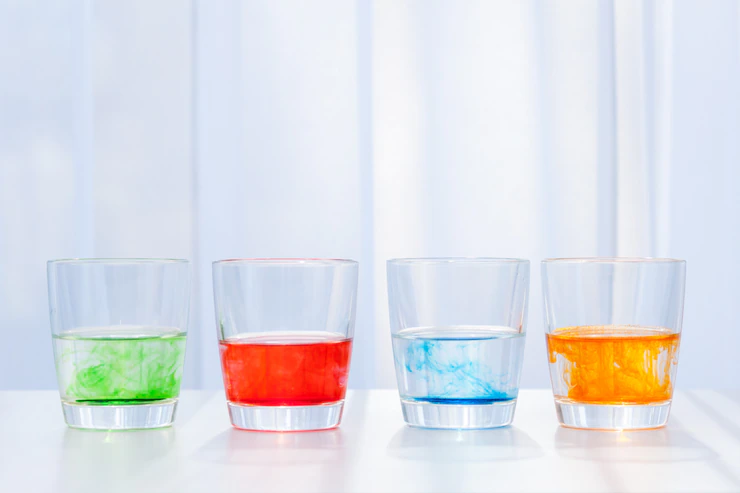Have you ever seen a piece of cloth get dipped in the water; the water starts at the end of the cloth and spreads to other areas of the cloth? Such an event is called a capillary phenomenon. Capillarity is the rise or depression of a liquid in a small passage, such as the spaces between the fibers of a towel or the openings in a porous material like a sponge. This event occurs because of the adhesion or cohesion force between the liquid and the passage wall.
Another common capillary phenomenon is when a mop is dipped in a bucket of water and gets wet because it has small holes that can draw water into the cloth. The event that makes the cloth wet is called capillarity. If you see it, you will easily understand it.
What is capillarity?
Simply put, capillarity is the rise or depression of a liquid in capillaries, or small holes, of a material. There are several definitions of capillarity according to experts. Dudi Indrajit describes capillarity as the rise or depression of a liquid through small holes. Meanwhile, Setya Nurachmandani defines capillarity as the rise and depression of a liquid in a capillary tube.
This phenomenon often happens in people’s daily life, but it’s rarely noticeable to most people. Although it might be a very common daily event, capillary actions can have two types of impacts: positive and negative; advantages and disadvantages.
The Formula of Capillarity

To calculate a capillary rise, we need a formula. This formula calculates the force that acts in each unit of the surface length. The force arises because the molecules attract each other so that it looks like there’s a thin layer created on the water surface, making a water droplet looks like a sphere when it falls into the air. Here’s the formula.
h = 2T cos θ/r ρ g
Each symbol in this formula represents an important component that helps us calculate a capillary rise. To use the formula well, you need to memorize these components so you don’t get the calculation wrong. The following describes what each symbol represents.
h = the height of a liquid column
T = gamma, the liquid-air surface tension (force/unit length)
θ = the contact angle
ρ = the density of the liquid (mass/volume)
g = the local acceleration due to gravity (length/square of time)
r = the radius of the tube
Capillary Phenomena in Our Daily Life
Wood Veins
A capillary rise happens to plants. Water rises from the soil through the roots and to the leaves. The wood veins are how water in the soil rises and spreads to all parts of a plant, including the leaves.
A Wick
A capillary rise also happens when we operate a stove. The rise of kerosene through the wick that causes the stove to burn is a capillary phenomenon. The wick of the stove serves as a passage through which oil rises.
Dry Surface
Imagine a wet surface that gets dry because it’s wiped with a cloth or tissue. In this event, capillary action occurs because there are pores on the cloth or tissue that causes capillarity.
Water on The House Walls during the Rain
When it’s raining, you sometimes find water rising on the walls of your house. This capillary phenomenon usually occurs when it rains heavily or in moderate intensity but for a long time.
Another Phenomenon
Try this experiment. Insert a capillary tube into a container filled with water. The water level in the pipe will gradually rise. Then, insert the pipe into a container filled with mercury. The surface of the mercury in the container will drop. This experiment shows that the capillarity phenomenon is caused by a cohesion force.
Example of Capillarity
As mentioned before, capillary phenomena are divided into two: those that are beneficial and those that are detrimental. Let’s take a look at both impacts of capillary actions on people’s daily life.
Advantageous Capillarity
- Take the event when water seeps on the surface of a tissue or piece of paper as an example. When you dip a tissue in a glass filled with water—half of the tissue being dipped is wet while the rest is dry. In this event, the water will rise and finally wet all areas of the tissue.
- Similar to what happened to the tissue, when you dip half of a piece of cloth in a glass filled with water, the water will rise. All the water will seep into the cloth and the water in the glass will run out.
- Imagine kerosene that rises through the wick of the stove or oil that rises through the wick of an oil lamp. These two events light up the two objects and allow them to work according to their functions.
Disadvantageous Capillarity
- Take the event when water seeps into the wall as an example. This condition is disadvantageous to humans because it tends to cause wall damage. Because of the phenomenon, green moss will grow on the wall, and the paint will become damaged and brittle. More severe conditions can occur when it comes to seawater, given the high salt contained in it.
We’re at the end of our discussion about the definition, impacts, and examples of capillarity in our everyday life. At Sampoerna Academy, science is a big part of our unique learning approach called STEAM.
STEAM is an educational approach that uses Science, Technology, Engineering, Arts, and Mathematics as access points to stimulate and guide students’ inquiries, dialogue, and critical thinking. The end result of STEAM is students who take risks, are engaged in experiential learning, persist in problem-solving, embrace collaboration, and work through a creative process. These students are 21st-century innovators, educators, leaders, and learners.
Get more information about STEAM learning at Sampoerna Academy here!
For further information regarding registration, curriculum, visits, and information about Sampoerna Academy, please fill in the data below.
[formidable id=7]
Reference





